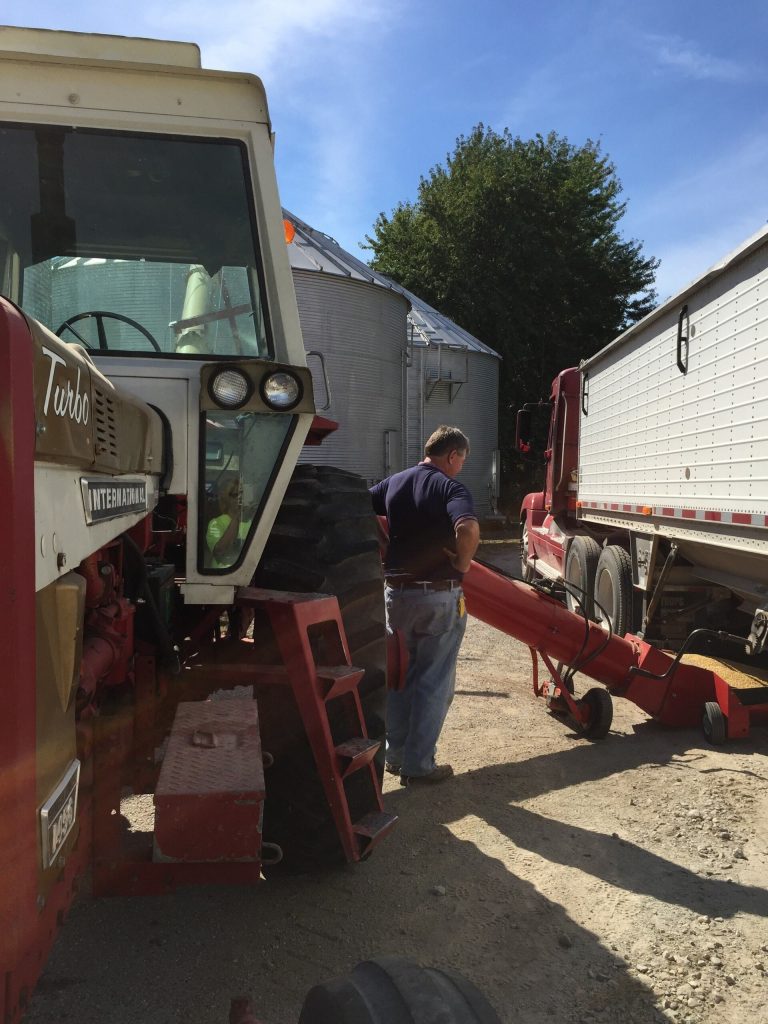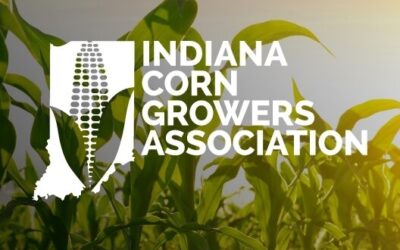McKinney: conservation efforts take time but they’re worth it
By Amie Simpson
Tom McKinney grew up on his family’s corn and soybean farm in Kempton, Ind., and returned to the operation after receiving his bachelor’s degree in agricultural economics and animal science from Purdue University.

“I knew I wanted to farm, so I came straight back and have no regrets,” he said. “At the time, my twin brother, Ted, and I were running a seed corn detasseling business, and that’s why I didn’t go off and spend two or three years working off the farm like my family wanted me to.”
That detasseling business continued for 35 years. Today, he leads efforts as president of McKinney Farms alongside his wife, Karen. The operation consists of several thousand acres of seed soybeans, non-GMO soybeans that are exported as whole beans, and high oleic soybeans as well as commercial corn for ethanol.
The seasoned farmer is no stranger to exploring the environmental and economic benefits of adjusting management practices. “What you don’t know, you don’t know,” McKinney said when reflecting on the decision to utilize different conservation practices on his farm.
“We started wondering if there was a better way to be productive while improving soil health. Cover crops are a good example. About five years ago, we started planting a few acres of cover crops and are increasing (that amount) each year,” he said. “We want to evolve, adapt, and improve, just like farmers always do.”
Complete no-till system for soybeans
With a 50/50 crop rotation, he has begun a strip tillage system for corn and has a nearly complete no-tillage system for soybeans into standing corn stalks. He has found success in using biologicals, which can help improve soil health and make it easier to plant crops.
“The process helps break down stalks so they’re more palatable going through the soybean planter at an angle,” McKinney said. “We prefer to stay with a 50/50 rotation for the efficiency of the nitrogen and to help suppress weeds.”
He also seeds cover crops with a vertical till, minimum disturbance tool. Today, he seeds cereal rye into 500-600 corn and soybean acres which can scavenge nutrients like nitrogen, reduce soil erosion and increase soil organic matter.
“We’ve learned that as long as you get an even seeding and emergence, cereal rye chokes out all weeds and because of that we don’t do any fall burndown where we seed cereal rye,” he said. “We raise 200-300 acres of non-GMO soybeans for IOM out of Portland, which is a whole bean market for the high dollar income of South Korea, Japan, Taiwan, the Philippines and Vietnam. We raise a little over 1,100 acres of high oleic soybeans, and 1,200 acres of seed beans for Pioneer.”
The Tipton County farmer has learned that cover crops are a long-term game. When asked if he’s seen yield benefits, he said the answer is probably not yet.
“If you talk to a farmer who is no-tilling or implementing other conservation practices, they will tell you it takes a few years of changing the biology of the soil to see yield results,” he said. “We’re getting there. Maybe this year’s improvements are part of that. Whatever the case, I believe what they’re saying. What I learn and what I study and what I hear from others in this space makes sense. For example, radishes break up compaction and oats put a root down, which is a path for the corn roots. So, it all makes sense. It just takes a few years to get that biology changed away from turning the soil.”
Switching to a strip tillage system
McKinney admitted there has been a learning curve switching to a strip-tillage system. Because of some electronic issues on a strip toolbar, they only strip-tilled about 300 acres last fall.

“Which is okay,” he said. “We weren’t going to beat ourselves up; and if we were going to do it, we were going to do it the correct way. We’ve been vertical tilling for several years, and we’ve had excellent yields, but we’re anxious to do more strip tilling. We’re putting dry fertilizer – phosphorus (P) and potassium (K) – on in the fall.
“We’re excited about our strip-till rig. We went ahead and invested to have guidance on the back of the tractor. Not only do we have Real Time Kinematic (RTK), a technique used to increase the accuracy of GPS, on the tractor itself, but we have the steerable ProTrakker Hitch that helps keeps us straight. We’re excited about getting all the acres done next time, and we’re saving money by eliminating three trips. We have our own fertilizer truck, so we’re saving the cost of hiring outside help and saving that trip which can be between $7 and $8.50 an acre. We’re also saving the fall trip with a disc chisel or disc ripper, and then we’re saving a trip in the spring, in our case, with a vertical tillage tool.”
Advice he has for someone looking to adopt similar practices is to find a mentor, attend conferences and lean on research from land grant universities and resources from organizations like the Indiana Soybean Alliance and Indiana Corn Marketing Council.
“Don’t be afraid to try something. There are so many people implementing these practices today. You can typically find a farmer who will have you ride in the cab with them or let you drive their tractor or even run the strip till bar to get a feel for what it’s like and learn the monitors,” he said.
He noted that it’s important that conservation practices remain voluntary, but farmers should be proactive in finding what works on their farm.
“We’re a long way from it, but if we don’t adapt as production agriculture, a mandate is going to strongly suggest that we implement these practices,” he said. “So, let’s stay ahead of the game, and make it profitable. The mentors that I have looked to and sought answers from have been doing that and I continue to learn from them.”
As for finding a mentor, McKinney said the national no-till conference is a good way to learn from people who have experience implementing various conservation practices. The next national no-till conference is Jan. 7-10, 2025, in Louisville, Ky.
He also encourages farmers to contact land grant universities – Purdue University, Ohio State, Iowa State, University of Illinois Urbana-Champaign, and Michigan State – and find out about ongoing research and suggestions for getting started.
Posted: July 20, 2024
Category: ICMC, Indiana Corn and Soybean Post - July 2024, ISA, News, Sustainability




